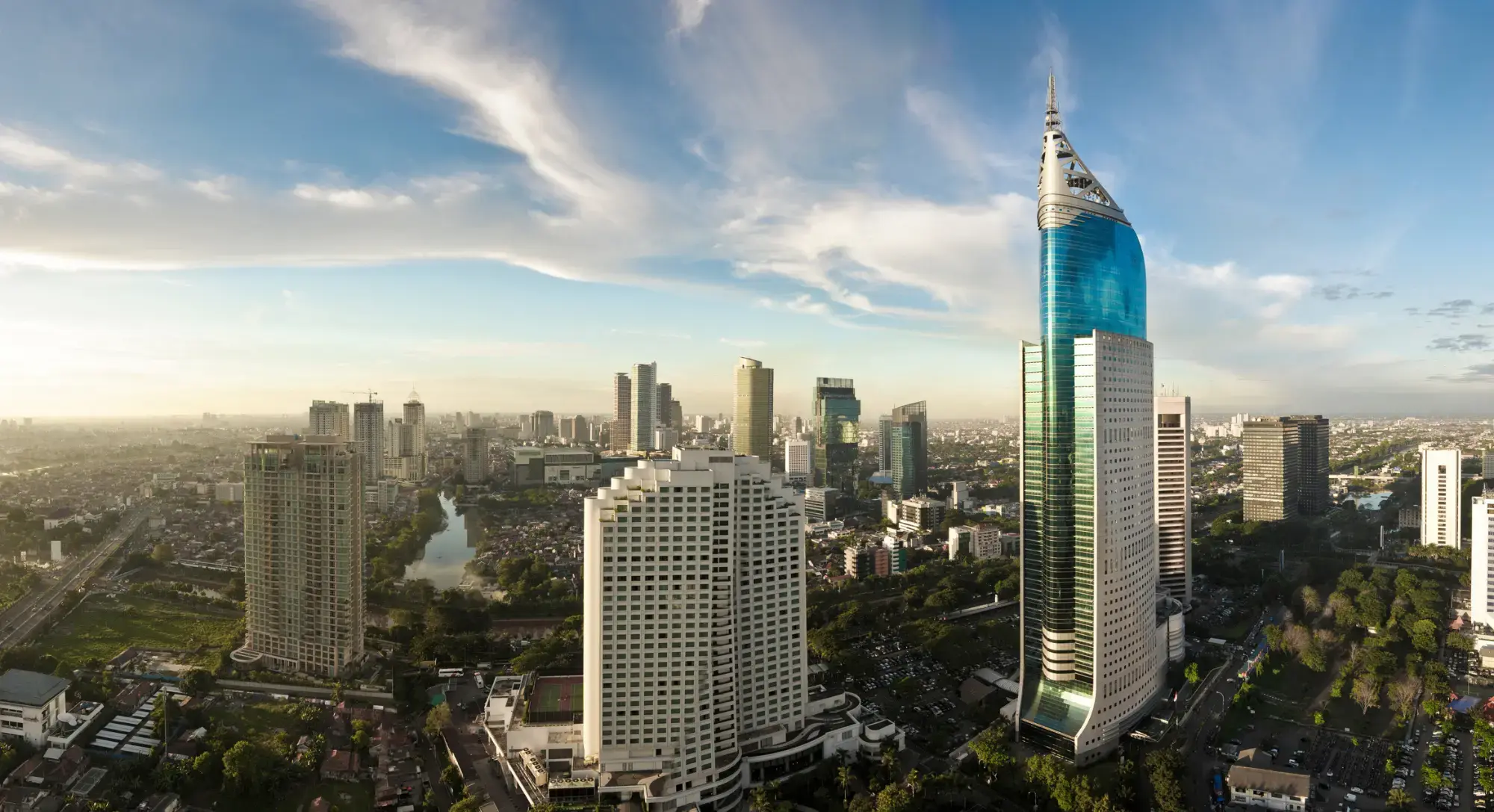Indonesia is one of the most dynamic and fastest-growing advertising markets in Asia. It is vast, young, mobile-first, and increasingly digital.
For many global advertisers, it represents an opportunity to scale in a way that few other countries can offer.
But with that opportunity comes complexity.
Indonesia is not like Europe, the US, or even other Asian markets. It has its own platforms, languages, layers of local media owners, and unique consumption patterns.
The country stretches across more than 17,000 islands, with massive differences in access, culture, and infrastructure from one region to the next.
This is not a market where you can copy-paste a global media strategy.
This article is a practical guide to understanding and navigating Indonesia’s media landscape.
We’ll explain what makes it different, how media works across the country, which players matter most, and what advertisers need to do to succeed.
Why Indonesia Deserves More Attention
Indonesia is a sleeping giant.
It is already the world’s 4th most populous country and on track to become the 4th largest economy by 2050, according to Goldman Sachs and PwC.
Yet it is often overlooked by global advertisers, who prioritise China, India, or more mature Western markets.
But the fundamentals are compelling:
-
275M+ people, with a fast-growing middle class
-
$146B projected digital economy by 2025
-
One of the youngest populations in Asia – with 16% aged 16–24
-
$1.7T in untapped mineral wealth, especially in nickel
-
A critical trade hub – $500B in goods passes through Indonesian waters annually
The combination of scale, youth, and growth makes Indonesia one of the most promising advertising markets in the world.
But tapping into that opportunity requires a shift in mindset, and a deep understanding of the media environment on the ground.
What Makes the Media Landscape Unique
Indonesia is not a single market. It is a complex, decentralised ecosystem of national networks, regional broadcasters, digital platforms, and hyper-local players.
Many advertisers underestimate the degree of fragmentation and the challenges that come with it. Here’s what makes it different:
- TV still matters. Despite digital transformation, TV continues to be the dominant channel, with over 200 national and regional TV stations, many of them family-owned.
- Mobile is the primary screen. Most Indonesians access the internet exclusively via mobile. Desktop use is minimal.
- Social media dominates attention. TikTok, Instagram, YouTube, and Meta are embedded in daily life. Influencer and creator content is often more effective than display or banners.
- OOH is powerful in urban areas. Jakarta and tier-2 cities are saturated with high-impact billboard and transit inventory. Regional differences are huge.
- Radio still plays a key role. Especially outside of urban centres, where it remains an efficient way to reach local audiences.
- E-commerce is booming. Platforms like Tokopedia, Shopee, Bukalapak and Lazada are reshaping consumer behaviour and creating new media formats.
- Multiple languages. Bahasa Indonesia is the national language, but local dialects still influence perception and messaging effectiveness.
- Sustainability matters. Younger Indonesian consumers are increasingly value-driven. Brands with clear purpose are winning trust and share.
Put simply: Indonesia is big, mobile, social, and regionally fragmented. If you don’t localise your approach, you will miss the mark.
The Key Domestic Players
Most global advertisers continue to focus heavily on Google and Meta.
But that’s not the full picture. Indonesia has a rich domestic media ecosystem that offers scale, cultural relevance, and cost efficiency.
Here are some of the key groups to know:
- Kompas Gramedia – A powerful conglomerate spanning newspapers, magazines, TV, and digital platforms.
- Trans Media – Owner of Trans TV, Trans7, and CNN Indonesia. Strong urban reach and modern programming.
- MNC Media – Parent of RCTI, MNCTV, and GTV. High share of TV viewing and expanding digital footprint through Vision+.
- Emtek Group – Owns SCTV, Indosiar and Vidio, one of the fastest-growing streaming platforms in Indonesia.
- Telkomsel – The largest telco in the country, developing its own addressable media offering.
- TikTok Shop – Piloted in Indonesia and now a major force blending content and commerce.
Advertisers who rely solely on global platforms may miss out on more targeted, efficient, and culturally resonant opportunities through these local players.
Benefits vs. Risks for Global Advertisers
Indonesia is full of opportunity, but it’s not without its challenges.
The Benefits:
- Massive reach. A single country with the population of Western Europe.
- Mobile-led innovation. Marketers can test and scale digital-first formats quickly.
- Platform diversity. Multiple local and global media players offer more choice and leverage.
- Negotiable media rates. Unlike fixed markets, pricing here is often flexible.
- Cultural engagement. Brands that invest in local relevance see real results.
The Risks:
- Fragmentation. Without a multi-layered plan, coverage will be incomplete.
- High media inflation. Especially in non-biddable channels, costs can rise fast.
- Transparency challenges. Media pricing and delivery often lack consistency and documentation.
- Ad fraud. Especially in mobile programmatic buys. Monitoring is essential.
- Language and localisation gaps. National-level creative may fall flat in regional markets.
Mini Case Study
One advertiser ran a pan-ASEAN media plan with the same assets across 7 markets. In Indonesia, results underperformed. Post-campaign analysis revealed poor mobile optimisation, lack of Bahasa copy, and overinvestment in desktop inventory. When the campaign was relaunched with mobile-first video and local creators, results improved by 240%.
How Global Advertisers Should Respond
Success in Indonesia requires more than good media planning. It requires localisation, vigilance, and smart execution. Here are five actions advertisers should take.
1. Build Indonesia-specific plans
- Avoid regional templating. Treat Indonesia as a stand-alone market with a customised strategy, budget, and mix.
2. Prioritise mobile-first, short-form video
- Invest in vertical video formats, influencer content, and interactive mobile placements. Traditional display will struggle.
3. Audit media regularly
- Insist on independent audits to validate delivery, pricing, and performance. Don’t rely solely on agency or platform reports.
4. Blend national and regional media
- Combine high-reach TV and OOH with regional radio, digital, and print to drive local engagement.
5. Strengthen contract and compliance frameworks
- Secure audit rights, clarify roles, and build transparency into agency and media owner contracts.
Questions to Ask Your Media Agency
Indonesia isn’t the market to stay hands-off. Ask the right questions and drive the right behaviour.
- Are we localising our creative and media plans for Indonesia?
- How are we balancing global platforms vs. domestic media groups?
- What steps are in place to monitor fraud in mobile placements?
- Are we buying non-biddable media competitively? Are the rates audited?
- Who’s accountable for localisation, compliance, and translation?
Conclusion & Next Steps
Indonesia is a market every global advertiser should take seriously.
With massive population scale, strong digital growth, and rising consumer expectations, it offers both reach and relevance.
But to succeed, advertisers must be prepared to localise, simplify, and manage complexity. There are no shortcuts. This is not a plug-and-play market.
Handled well, Indonesia can become a high-performing engine of growth in Asia.
Handled poorly, it can become a costly blind spot.
Don't hesitate to reach out to us or schedule a call with us if you need support navigating these challenges.
--------------------------------------------------------------------------------
About the Author
 Nick Binns, Senior Vice President for Asia Pacific at Abintus Consulting, has over 25 years of media experience, including more than 15 years based in APAC and China, as well as 7 years in the UK. Formerly Chief Investment Officer for WPP Media APAC, he managed media investment for global brands such as Unilever, Nestlé, P&G, L’Oréal, Haleon and Pepsi. Nick combines deep knowledge of China’s unique media ecosystem with first-hand experience of APAC’s fast-growing markets, where digital dominates and challenger brands rise quickly.
Nick Binns, Senior Vice President for Asia Pacific at Abintus Consulting, has over 25 years of media experience, including more than 15 years based in APAC and China, as well as 7 years in the UK. Formerly Chief Investment Officer for WPP Media APAC, he managed media investment for global brands such as Unilever, Nestlé, P&G, L’Oréal, Haleon and Pepsi. Nick combines deep knowledge of China’s unique media ecosystem with first-hand experience of APAC’s fast-growing markets, where digital dominates and challenger brands rise quickly.



